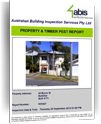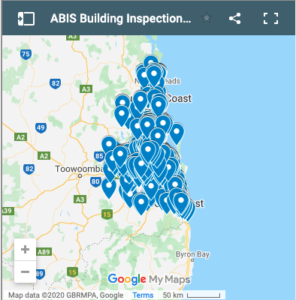Property Fences

The Queensland Government regulates fencing, including how disputes between neighbours are resolved. Queensland’s Dividing Fences Act 1953 deals with constructing and repairing fences that divide adjoining land.
Approvals
Generally, in Brisbane, building and planning approvals are not needed for a proposed front, side or rear boundary fence if the fence meets all of the following requirements:
- It is associated with an existing house
- It is less than two metres high
- It is not associated with a swimming pool which has its own requirements.
- It is not part of a retaining wall
- It would not restrict water run-off from adjoining properties
If the proposed fence does not meet these basic requirements, you may need to lodge a building or planning application, or both.
Building approval
Whether or not the proposed fence is associated with a new house or other residential use, a building approval through a licensed building certifier is required for the fence if it is higher than two metres above the natural ground surface. This may include a combined retaining wall and fence.
Planning approval
City Plan does not regulate fences unless they form part of a development application. However, City Plan does offer some basic design guidance, such as avoiding high solid fences and including indentations and detailing in fences to provide visual interest. New fences should reflect the style of other fences existing in the area.
Depending on where the site is located, you will need to consider City Plan requirements if your fence is part of a proposal to:
- build a small house lot
- build a multi-unit dwelling i.e. units or apartments
- build a new house
renovate an existing house or multi-unit dwelling in a Demolition Control Precinct and/or Character Area. For example, the Residential Design – Character Code (P7), which applies to sites in Character Areas, requires that front fencing must reflect pre-1946 architectural styles and complement the building design. The Heritage Place Code applies special requirements to building work, including fencing, on sites identified as a ‘heritage place’ or within a Heritage Precinct.
These requirements relate to impacts on adjoining properties and the streetscape, particularly:
- privacy
- access to sunlight
- building appearance and setting
The Dividing Fences Act 1953 relates to constructing and repairing fences that divide adjoining land and aims to help you obtain a contribution from your neighbour. Generally, owners of adjoining land not separated by an adequate fence are liable to contribute equally to the cost of a dividing fence.
Suggested plan of action
Discuss the type of fence, the cost and how it will be built with your neighbour who is the owner of the property. Achieve a written agreement which is easier to enforce. Prior to construction of the fence, give notice in writing.
The notice should:
- specify the common boundary to be fenced
- specify the kind of fence proposed
- contain a proposal for the fence (include an estimate of cost, contribution required and method of construction). As a matter of courtesy, two quotes should be supplied. If your neighbour accepts your proposal, then he/she will be bound to pay half the cost of it.
What if you can’t agree on where the fence should go?
Fences should be built on the common boundary. If the common boundary can’t be agreed upon, the procedure to follow:
- Give written notice to your neighbour of your intention to employ a registered cadastral (or land) surveyor (the cost of the survey to be paid in equal shares by you and your neighbour)
- When your neighbour has written advice from you, he or she can either:agree to employ the cadastral surveyor, or
- place stakes (other than marks used by a cadastral surveyor) which demonstrate in his/her opinion the common boundary line for the dividing fence
- Your neighbour must let you know which option he/she will take within seven days of receiving your advice
- If your neighbour selects option 2 and you do not agree on the position of the stakes, you may employ a cadastral surveyor to define the common boundary line
If the cadastral surveyor finds that your neighbour’s stakes were correct, then you would be liable to pay all expenses incurred, otherwise, the expenses would be divided equally.
The type of fence
Check with your local council if:
- the fence is to be higher than others in the neighbourhood
- the fence is to form part of a retaining wall
- there could be any restriction to water run-off
- the fence is to have some other unusual feature
What if your neighbour refuses to contribute, challenges the cost, or disagrees with the type of fence you wish to construct?
Do not go ahead and build the fence. If you and your neighbour cannot reach an agreement after one month, either party may apply to either a Magistrates Court or the Small Claims Tribunal for an “order to fence”.
In making any order, the Magistrates Court or Small Claims Tribunal will take into account the type of fence common to the area and the purpose for which the adjoining lands are used.
What if you’ve already built the fence?
If you failed to give your neighbour a Notice to Fence, then you are not covered by the Dividing Fences Act. Once the construction of the fence has started, the Magistrates Court and the Small Claims Tribunal cannot deal with your claim. If you and your neighbour agreed on a price prior to construction, and your neighbour’s share was $7500 or under, the claim may be referred to the Magistrates Court as a minor debt claim.
What if you want to repair an existing fence?
When an existing dividing fence needs repairing, the owners on either side are liable to contribute equally unless one of them caused the damage. If you want your neighbour to contribute to the cost, you should issue a Notice to Repair requiring assistance. Generally, if your neighbour fails to assist within 1month of the notice being served, you can repair the fence and recover half the cost. If the neighbour advises you in writing within 14 days of service of notice that he/she disputes the need to repair and won’t contribute towards the cost, you may need to apply to a Magistrates Court or a Small Claims Tribunal for a ruling. Maintaining the fence, for example painting it, is not covered by the Act, but it would be usual for each neighbour to paint their own side.
What if you want to replace an existing fence?
If the fence is beyond repair or very costly to repair, it may be reasonable to replace it with a new one. If so, your neighbour will be responsible for contributing to the cost of demolition as well as half the cost of a new fence. You should give your neighbour notice of your plan and follow the usual steps outlined in previous sections.
A free dispute resolution service is offered by the Dispute Resolution Centre. Trained, neutral mediators can assist you and your neighbour to reach a mutually acceptable solution at a place and a time to suit both parties.




